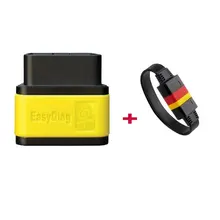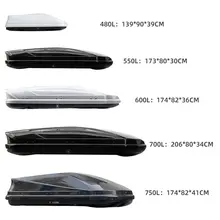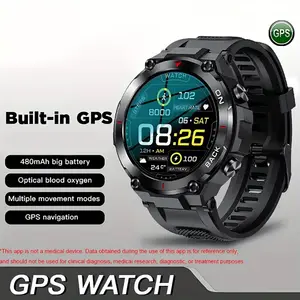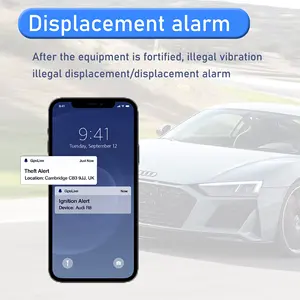About products and suppliers
독점 gt800 방수 gps 트래커를 살펴보십시오. Alibaba.com의 컬렉션. 애완 동물, 차량 및 어린이를 추적하는 데 적합한 정교한 장치입니다. gt800 방수 gps 트래커. 기술적 노하우없이 설치 및 작동이 간단합니다.
Alibaba.com의 gt800 방수 gps 트래커은 작고 휴대가 편리합니다. 재고가있는 기기는 3G / 4G 시뮬레이션과 같은 다양한 연결 옵션을 자랑합니다. 또한 Wi-Fi 또는 Bluetooth 호환성을위한 내장 안테나가 재고가있어 유비쿼터스 연결을 보장합니다. 도난 방지 장치가 있습니다. 도둑이 전원 공급 장치를 분리하자마자 장치는 자동 호출로 소유자에게 경고합니다. 이러한 장치는 또한 사용자의 자동차 차량을 추적하고 자산과 직원의 안전을 보장 할 수 있습니다. 자세한 추적을 위해 여러 위치 모드를 사용합니다. 방수 및 내화 제품도 재고가 있습니다.
gt800 방수 gps 트래커에는 오래 지속되고 안정적인 배터리가 있습니다. 이 장치에는 차량에 쉽게 고정 할 수있는 강력한 자석이 있습니다. 장비에는 소비자가 애완 동물을 추적해야하는 경우 쉽게 착용 할 수 있도록 애완 동물 목걸이가 있습니다. 또한 주변 환경을 측정하기위한 음성 녹음 옵션도 사이트에서 사용할 수 있습니다. 내비게이션 히스토리를 기록하기위한 히스토리 경로 재생과 같은 새로운 기능을 갖춘 고급 장치도 구매자가 액세스 할 수 있습니다. 과속 경보 및 배터리 부족 경보를 위해 프로그래밍 할 수도 있습니다. 지오 펜스 측면은 추적 장치가이 경계를 넘을 때 사용자에게 경고하는 공간 둘레를 생성 할 수도 있습니다. 기계는 몇 미터의 정확도를 자랑합니다.
수익을 올리십시오 gt800 방수 gps 트래커. Alibaba.com에서 거래합니다. 나열된 공급 업체는 최상급 제품을 판매하고 신뢰할 수있는 배송 옵션을 제공합니다. 할인 된 가격으로 흥미로운 거래에 액세스하려면 지금 플랫폼을 방문하십시오.
Alibaba.com의 gt800 방수 gps 트래커은 작고 휴대가 편리합니다. 재고가있는 기기는 3G / 4G 시뮬레이션과 같은 다양한 연결 옵션을 자랑합니다. 또한 Wi-Fi 또는 Bluetooth 호환성을위한 내장 안테나가 재고가있어 유비쿼터스 연결을 보장합니다. 도난 방지 장치가 있습니다. 도둑이 전원 공급 장치를 분리하자마자 장치는 자동 호출로 소유자에게 경고합니다. 이러한 장치는 또한 사용자의 자동차 차량을 추적하고 자산과 직원의 안전을 보장 할 수 있습니다. 자세한 추적을 위해 여러 위치 모드를 사용합니다. 방수 및 내화 제품도 재고가 있습니다.
gt800 방수 gps 트래커에는 오래 지속되고 안정적인 배터리가 있습니다. 이 장치에는 차량에 쉽게 고정 할 수있는 강력한 자석이 있습니다. 장비에는 소비자가 애완 동물을 추적해야하는 경우 쉽게 착용 할 수 있도록 애완 동물 목걸이가 있습니다. 또한 주변 환경을 측정하기위한 음성 녹음 옵션도 사이트에서 사용할 수 있습니다. 내비게이션 히스토리를 기록하기위한 히스토리 경로 재생과 같은 새로운 기능을 갖춘 고급 장치도 구매자가 액세스 할 수 있습니다. 과속 경보 및 배터리 부족 경보를 위해 프로그래밍 할 수도 있습니다. 지오 펜스 측면은 추적 장치가이 경계를 넘을 때 사용자에게 경고하는 공간 둘레를 생성 할 수도 있습니다. 기계는 몇 미터의 정확도를 자랑합니다.
수익을 올리십시오 gt800 방수 gps 트래커. Alibaba.com에서 거래합니다. 나열된 공급 업체는 최상급 제품을 판매하고 신뢰할 수있는 배송 옵션을 제공합니다. 할인 된 가격으로 흥미로운 거래에 액세스하려면 지금 플랫폼을 방문하십시오.


































 浙公网安备 33010002000092号
浙公网安备 33010002000092号 浙B2-20120091-4
浙B2-20120091-4